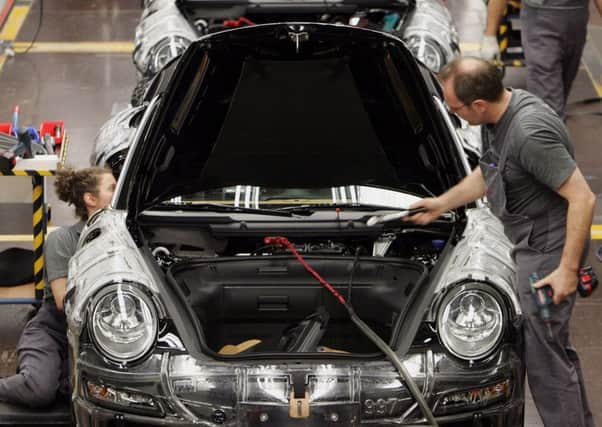Eurozone industry shows signs of slowing amid euro's rise
This article contains affiliate links. We may earn a small commission on items purchased through this article, but that does not affect our editorial judgement.


The Eurostat statistics agency said output declined by 0.6 per cent during the month, giving up half the previous month’s gain.
• READ MORE: Markets and economy news
While monthly figures can be volatile, the fall – the first since February – was in line with predictions in financial markets, with many economists warning about the implications of the euro’s rise in recent months, particularly against the currencies of the eurozone’s two biggest export markets, Britain and the US.
Advertisement
Hide AdAdvertisement
Hide AdAgainst the pound, the euro has benefited from worries over Britain’s scheduled exit from the European Union, with some market forecasters now predicting that the two currencies will soon be equal in value for the first time. On Monday, the euro was up a further 0.1 per cent at 91p.
The euro has also risen about 10 percent against the dollar this year – to a 30-month high above $1.19 earlier this month – on the back of strong eurozone economic data, waning fears of a wave of populist politicians taking power across Europe, as well as uncertainty over the economic program of US President Donald Trump.
The output figures point to a currency impact, particularly in Germany, the single currency bloc’s powerhouse economy where production fell by 1.1 per cent. A stronger currency shows that confidence is returning to the eurozone economy, but it does have the potential to weigh on exporters as it increases the price of their goods in international markets, all other things being equal.
Despite the June fall, industrial production was still a healthy 2.6 per cent higher compared with a year earlier, though down on May’s 3.9 per cent annual rate.
The general trend, though, is clear. The eurozone economy is in a better position than it has been for years. Fears of a break-up of the currency bloc have subsided while growth has risen to the long-run average and has outstripped the US so far this year.
In the second quarter, the eurozone economy grew by a quarterly rate of 0.6 per cent. Economists said the June industrial production figures are unlikely to prompt any revision to that rate in this Wednesday’s update.
Advertisement
Hide AdAdvertisement
Hide Ad“All things considered, we remain optimistic about the eurozone economy, and forecast above-consensus growth of 2.2 per cent this year and 2 per cent in 2018,” said Jack Allen, European economist at Capital Economics.